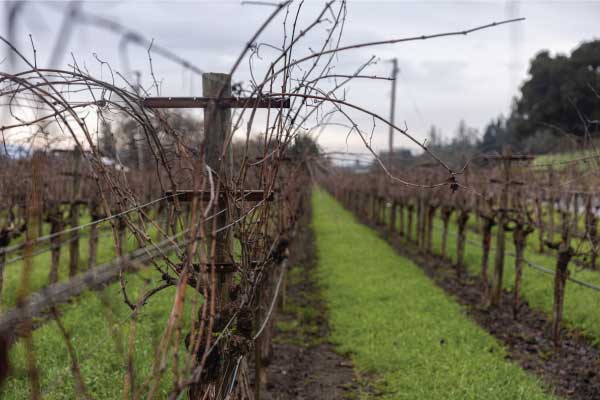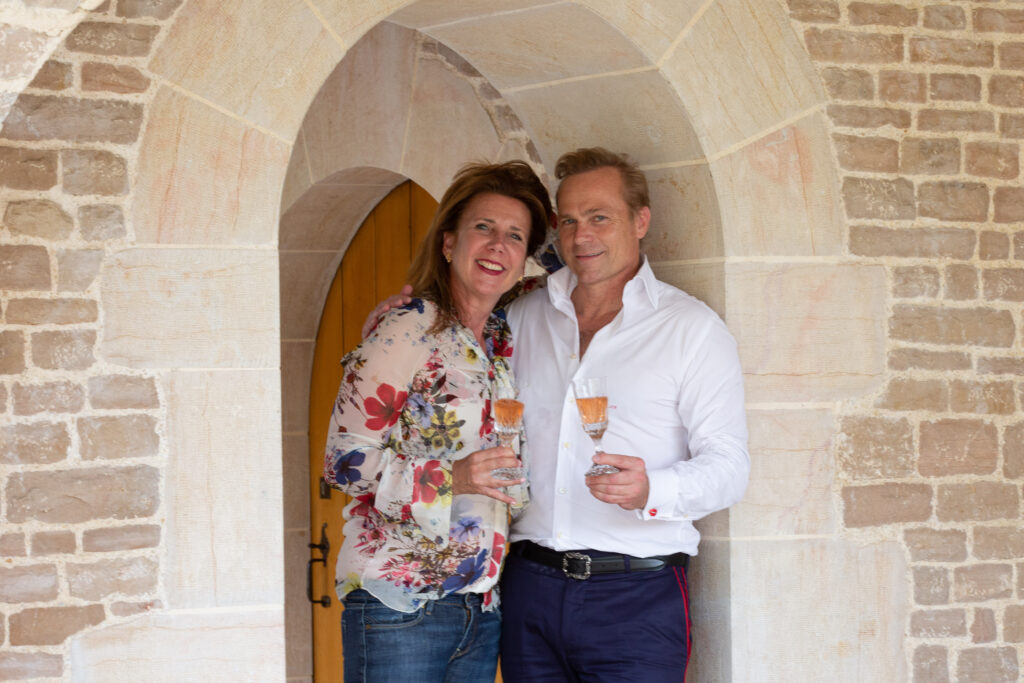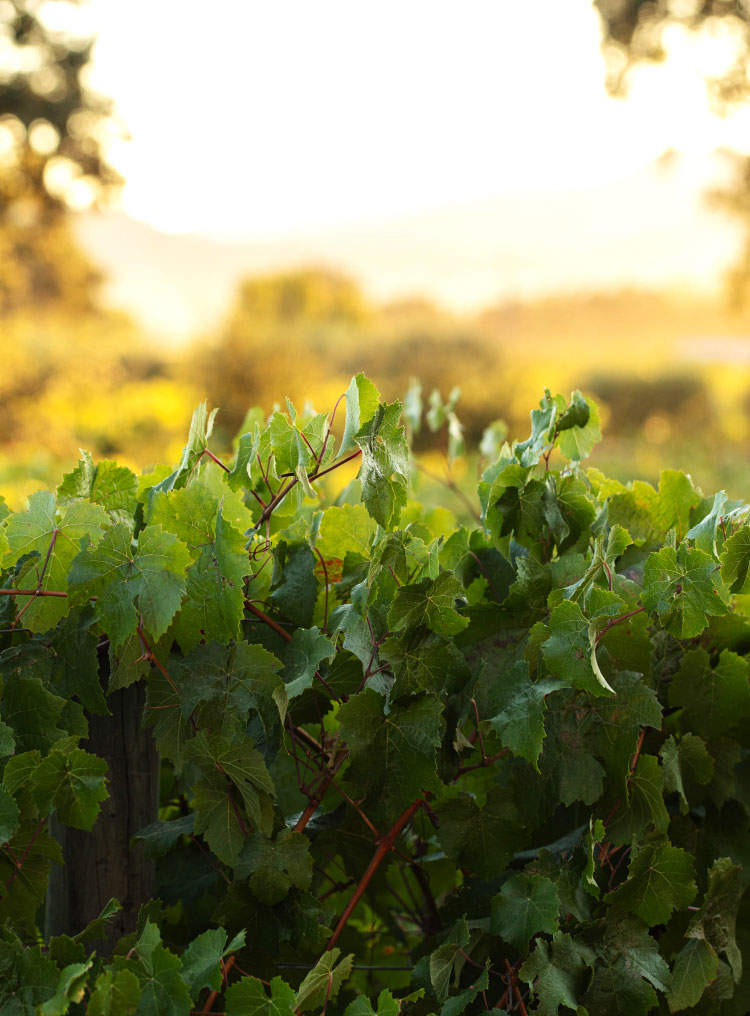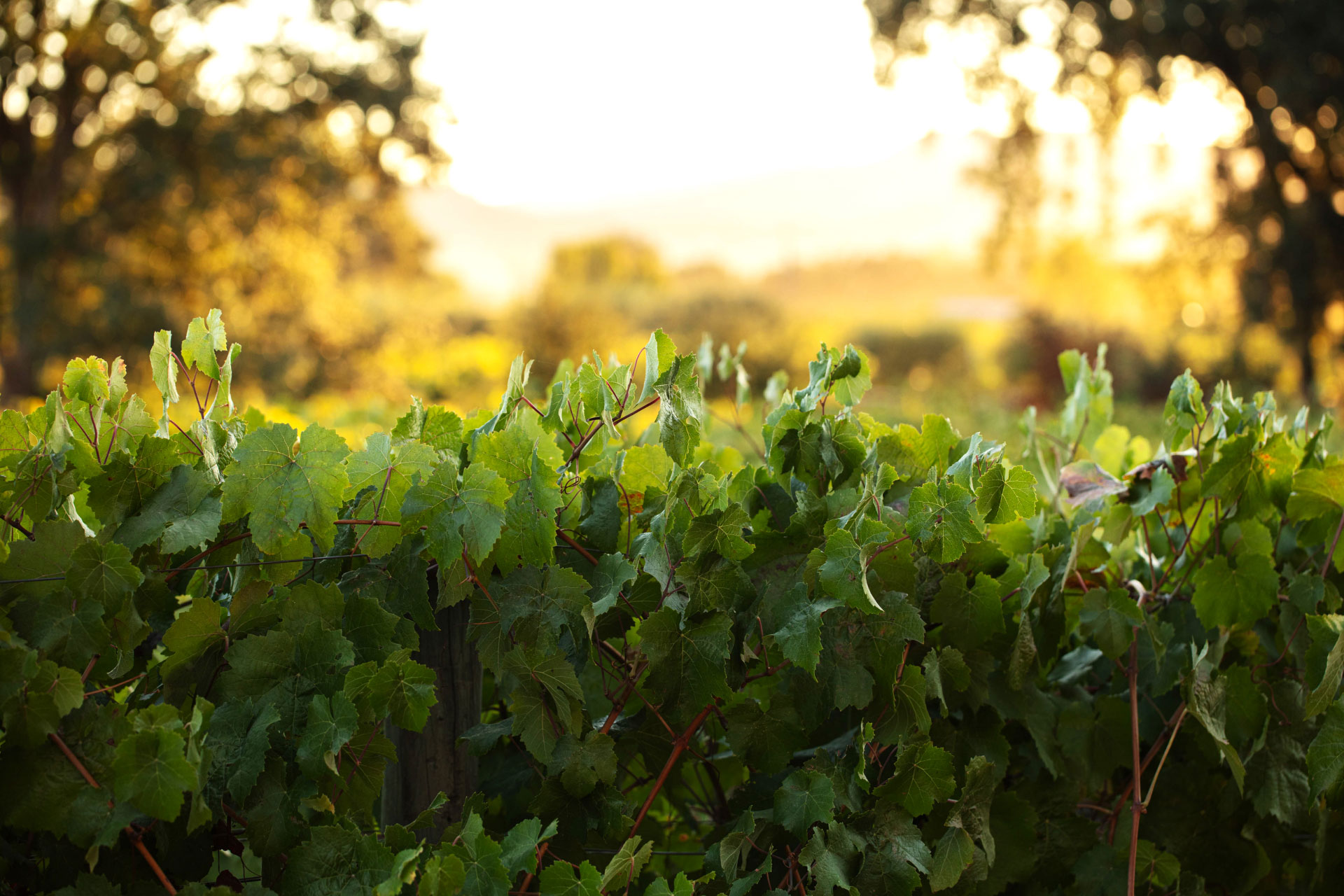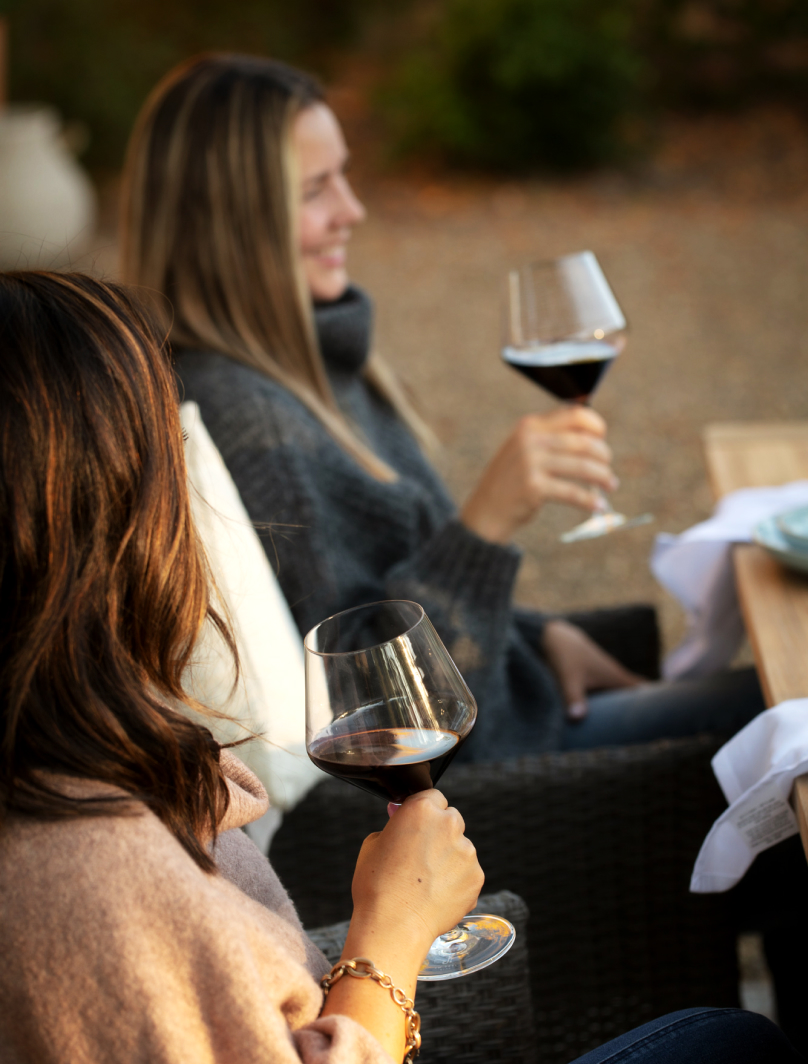Flora Springs: 40 years of stories in the Napa Valley, The Napa Valley Register
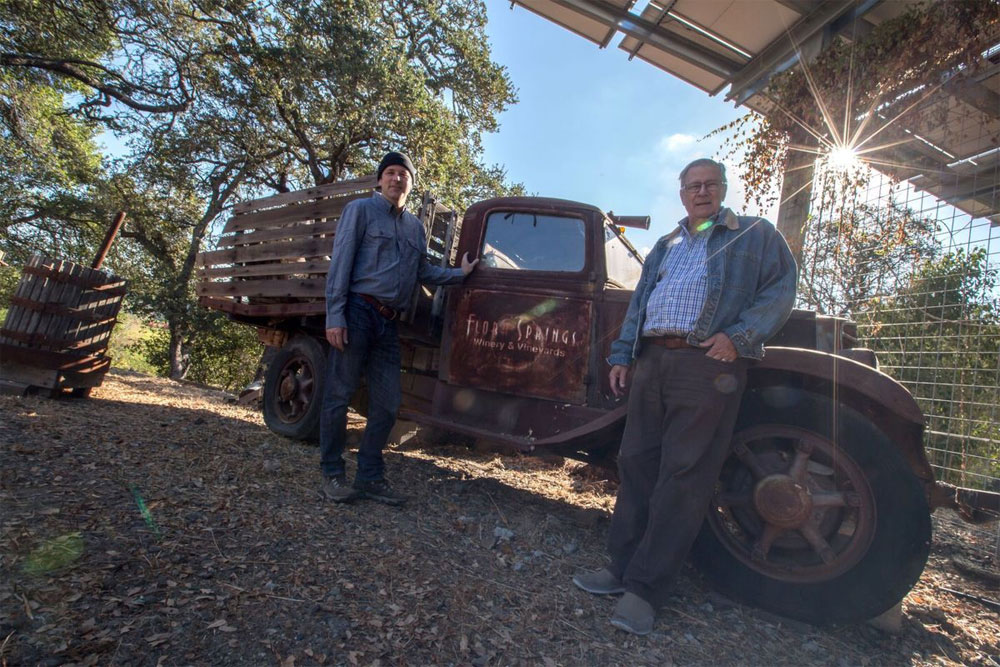

Note: The following article about Flora Springs Winery 40th Anniversary was written by Sasha Paulsen and published in The Napa Valley Register can also be found here.
Say “Flora Springs Winery,” and many people will think of the distinctive tasting room on Highway 29, just south of St. Helena, the one inspired by the imaginative Catalan architect Antoni Gaudí that looks a bit like a soft-swirl ice cream cone, chocolate and vanilla.
But there’s a story behind the unusual tasting room — about a mile behind it, at the end of West Zinfandel lane in a stone ghost winery that is, literally, the roots of Flora Springs, celebrating its 40th anniversary this year, as well as the 30th anniversary of its celebrated red wine, Trilogy.
Travel down this road to taste a few wines. And if you chance to meet John Komes, proprietor, you will hear stories about everything from how each wine in the Flora Springs portfolio got its name to why there is a statue of a wild boar greeting visitors on the grounds.
“Some people say I saved this property,” Komes remarked with chuckle as he surveyed the vineyards in front of the winery. “My dad was a gin drinker. If we’d left it to him, he’d have replanted everything in juniper.”
That was in 1977 when his parents, Jerome and Flora Komes, were looking for a place to retire after Jerome’s long, successful career with Bechtel Corporation. “He wasn’t that interested in wine,” Komes said. “A lot of his friends were retiring up here, just for the climate and the life. I think he thought he’d be a gentleman farmer.”
It’s well documented what happens to people who purchase land in Napa Valley, intending to retire. It this case, however, it was son John Komes who inspired — and took the lead on turning his dad into a vintner.
This was because just a few years earlier, John Komes’ wife, Carrie, had signed them up for a wine appreciation class. “I said ‘OK, I’ll do my social duty and go with you.’” They were living in Lafayette at the time, where John was a building contractor. He was in for a surprise.
“I loved the stuff. I’d never really tasted wine,” he said. “I was the kind of guy who went three times to the buffet and said that’s dinner. But I loved this. We tasted Burgundy, Bordeaux, Italian wines.”
Then came the real coup de foudre. He said, “A couple of people in the class said, ‘Wow, you are really enthusiastic. Would you be interested in joining our home-winemakers’ group?’”
He joined. “We really had fun making the wine. And it served a good purpose: I gave it to family and friends, and they never bothered me again.”
But when John Komes saw the property his father was going to buy, he decided they had to take it back to its original purpose — a winery.
The stone winery on the grounds had been built in 1885 by two brothers, James and William Rennie, immigrants from Scotland. “They were in the building trade too,” Komes said. “They built the winery and planted 60 acres of grapes.”
Then the brothers hit a patch of bad luck: phylloxera in the vines, and a fire in 1900 destroyed their wine press and cooperage. In 1904, they sold the winery, and 15 years later it was hit by an even greater calamity: Prohibition. The winery was closed until 1933. That year, Louis Martini, one of the valley’s wine-making legends, sensed the approaching collapse of the government’s experiment in teetotalism and bought the Rennie property. He built a new stone house, and made a reserve wine from the hillside vineyards but the old winery remained a ghost until the Komes bought the property, 325 acres, an old farm house, the newer stone house, and 60 acres of vineyards.
Komes said he originally thought he’d persuade his dad to restore the old winery by proposing to name it Chateau Jerome; but although it had been designed by Hamden McIntyre, the architect of other classic 19th-century Napa wineries, by 1977, the fire-scarred ghost was in all but a wreck. “The tin roof of the building had a million holes in it,” Komes said; “so many we called it the starlight roof. My dad looked at it and said, ‘ I’ve worked all my life for my good name. I don’t want to squander it now.’”
John’s mother, Flora, however, sided with her son on the potential of the property. And Carrie Komes suggested they could name the winery for her mother-in-law. Combined with the abundant springs on the land, they decided the name would be Flora Springs.
“That was the sure way to my mom’s heart and my dad’s pocketbook,” Komes said. Flora Komes, born and raised in Hawaii, had come to San Francisco during the Depression to study nursing at St. Mary’s College. There, she met Jerome. “He was a Fresno boy,” Komes said. “My dad was a tough old German. My mom was perfect, a great lady. My dad traveled a lot for his work, so she was the one who really raised us. We were a really happy family.”
Komes put his construction expertise to work to renovate the old winery, which still had scorch marks on the walls. So skeptical was his father about his son’s wine-making project, they divided the winery building and John rented half where he put his first fermenting tank, which he named R2D2.
He invited a couple of friends from his wine-making class to help make wine at the new place. He also hired MaryAnn Graf, who in 1965 had been the first woman to graduate from the viticulture and enology department at UC Davis to help manage the project. “She told me, John, if you don’t hire a winemaker, I’ll quit.” He did, and the 1979 Flora Springs chardonnay won a gold medal at the Los Angeles County Fair.
“In those days, it was fairs, not ratings, that made the difference,” Komes said. “This was my first lesson in marketing. We’d sold the wine before we won the medal.”
Their 1981 cab they submitted to eight fairs and won seven gold medals.
From there, the winery just kept growing. “We were the 67th winery in the county,” Komes said. “My sister, Julie, was a big part of building the winery. Later she left to go religious school, but I like to say she’s still in the spirits business.”
Julie Komes Garvey earned a degree in spiritual studies from the San Francisco Theological Seminary and the Franciscan School of Theology and now works in St. Helena. Her husband, Pat Garvey, and son, Sean, are the vineyard managers for the Flora Springs vineyards.
“We’ve had our ups and downs,” Komes said. “But we kept growing. We started small, but kept moving ahead. We were pretty much self-schooled.”
One highlight was the creation of Trilogy, one of the first meritage blends in the valley. By 1984, Komes said, they’d planted the Bordeaux varietals, malbec, merlot, cab franc, cabernet sauvignon, petit verdot. They wanted to create a blend “by taste, not by formula for a nice smooth wine that goes deep into the palate.” he said. “We want a little of this, a little of that. What God forgot, we added.”
The first Trilogy was cabernet sauvignon, merlot and cab franc was soon dubbed “velvet in the mouth. A lot of what we do is ‘taming the tanins,’ Komes said. ‘One man who buys Trilogy by the case said it’s the only red wine his wife will drink young.” From the “leftovers,” they began making single-varietal estate wines.
Another highlight was the discovery of a unique clone of sauvignon blanc in vineyards his dad bought in Oakville. UC Davis could identify nothing like in in their vast library of clones. “We were a bit ahead of the times, but this clone showed us what sauvignon blanc could be. It takes all the grassiness out of sauvignon blanc.”
It took eight years to register and then propagate the clone, an effort Komes said was well worth it. “We paid UC Davis $7,000-$8,000 to keep the clone so we are the only ones that have it.” They named the clone — and the wine it creates — Soliloquy “because of its uniqueness.”
“We’ve gone through some difficult stages, too,” Komes said. In the 2000s, they spent three years cleaning up a brettanomyces taint in the winery, which rigorous cleaning and replacing all of their barrels. “But we got through it,” Komes said, “Our winemaker, Paul Steinauer, is producing great wines. I think you’ll be amazed by them.”
John and Carrie also lost a son to cancer, but their other son, Nat, is increasingly taking a leadership role in the winery, and they are spending winters at their second home in Arizona.
Today, the Flora Springs portfolio is as rich as its history, and the labels tell its stories: The Rennie Reserve Cabernet, the Holy Smoke Cabernet (named for exclamations of Carrie Komes’ German father as he inspected the Flora Springs vineyards) and the Ghost Winery malbec. The expansive list includes luscious bargains like a $40 estate cabernet sauvignon and as $25 estate sauvignon blanc. Library wines are being made available for this 40th anniversary celebration.
Flora Komes died just three months short of her 101st birthday; her husband had died 10 years earlier. “We had a great 100th birthday party for her and she shook everyone’s hands,” Komes said. Flora’s legacy lives on, not only name of a winery and the larger-than-life-size portrait in the tasting room of Flora arriving from Hawaii at the age of 23, but in her own label, the Flora’s Legacy wines.
There are, in all, too many wines for one article to describe, although this writer attempted to taste as many as possible and thoroughly enjoyed them all. The best way to discover them is to make an appointment, and drive down Zinfandel Lane and into Napa Valley’s history. You’ll meet the wild boar statue, and just in case John Komes is not on hand to tell you the story, here it is:
“My dad was a great businessman, and when he came to the valley, land was selling for as much as $25,000 an acre. He thought that was shocking, so he decided when he was going to buy land in Pope Valley. He found 500 acres for sale that had 10 acres of grapes. He bought it for $1,000 an acre.
“Then he called me up. ‘John,’ he said, ‘I found an old house on the property I didn’t know it was there.’” A strange house, it had nine bedrooms and eight bathrooms and no living room. “And there were a lot strange tales about that house.”
“I asked him, ‘What do you want me to do?’ He said, ‘I want you to come over and build a living room so I can sell it.’”
So Komes built the living room and sent a plasterer to finish the project. “Then I get a call from him, ‘John, John, there’s a wild boar in the yard.’”
The upshot was the plasterer wanted Kome’s permission to shoot it. “I said I was a city boy; I didn’t know about wild animals, but then I said, ‘OK, as long as I can have the hind quarter.’ So the guy left to go get his gun, and then I got a call from the ranch foreman. ‘John,’ he said, ‘you won’t believe what’s going on here. Your workman just shot the neighbor’s pig.’
“So now we have the statue here so everyone knows what a wild boar looks like.”
And the wild boar has a wine label too. Wild Boar Cabernet Sauvignon.
Back to News